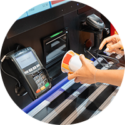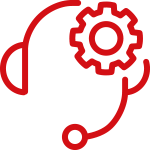If you’re reading this, you are likely a marketing professional that strives to get the best results from your efforts. After all, we all hope that the most recent campaign optimization will help us convert more customers, grow their purchase, or hit goal. But what if the right optimization happened before campaigns or communications were launched?
You’re collecting customer data. Now use it.
The CRM plan you have includes names, emails, and phone numbers for your customers. But you might also collect information on the most recent transaction, product types this customer buys, or the frequency at which they buy it. All of this data could help you to segment your audience and create email communications or ad sets that personalize your marketing to the person receiving it. Marketing that personalizes the message to the recipient feels highly curated to your audience, improving your end result. Statista has reported improved open rates of 18.8% over 13.1% when personalized messages are used in emails. It’s no wonder that 53% of marketers say ongoing, personalized communication with existing customers results in moderate to significant revenue impact. (DemanGen)
Marketers see an average increase of 20% in sales when using personalized experiences. (Monetate)
Where have you seen personalization happen before?

Real Estate
If homes in your neighborhood are selling over asking or in under 21 days, you’re likely to hear about it from the Realtors involved – especially those that sold you the home you’re in now.

Automotive
It’s no accident that your local dealer sends you an invitation to return your leased vehicle just as you are nearing the contract length of your lease.

Retail
Big box stores use their Point of Sale loyalty programs to send discounts and deals on the products you already purchase, or to introduce new (perhaps more premium) products based on your shopping history.

Banking
If you just closed on a new home, you should hear quickly from your bank about home equity lines of credit.

Travel
You just requested a travel guide for a dreamy destination. You’ll see that your next communications from them will introduce all the ways to plan your trip.
Consider these ways to use your CRM to track your customer’s differently and better. Once you’ve done so, you can communicate with similar stage/interest/purchase customers together, maximizing the effort you are making. We have a few ideas.
 Most recent Inquiry.
Most recent Inquiry.
If your customer recently touched base with your company for a service call, question about a product, or to introduce a new potential purchase, they may be the right candidate for a quick survey, a communication with product information, or a phone call from an account representative.
 Just signed up.
Just signed up.
They’re brand new to your list. That means something enticed them to signup — whether it was to “unlock and offer” or a great visit. They should receive a welcome message that expresses your gratitude, and maybe a “first timer” deal.
 Repeat Purchase.
Repeat Purchase.
Your customer bought the same thing twice. Now you know they love it, and you know how long they took to use it before replacing it. Not only do you know what product to remind them of, you now know the frequency of the communication or advertising.
 Close to closing.
Close to closing.
Your client is doing a deal with your firm, and you know they hit the 80% mark. What’s next? Perhaps your ads or emails (even push notifications) turn to encouragement or language to overcome late-stage jitters.
Most important: what you track shouldn’t end with the purchase. It’s great that they converted, and that you have the management tools to communicate. Don’t squander the post-sale loyalty building opportunity, the chance to talk about their product experience down the road, or the right moment to renew a relationship. 62% of consumers report feeling “happy” and “excited” to respond to a personalized message. (Dynamic Yield Research)


 Ad Choices
Ad Choices
